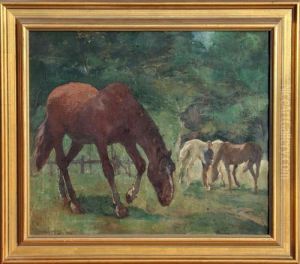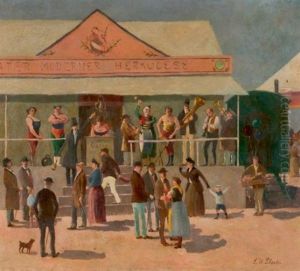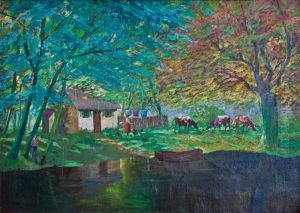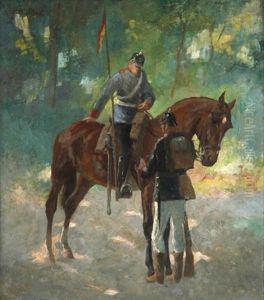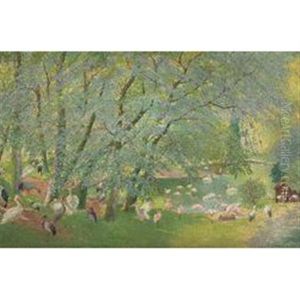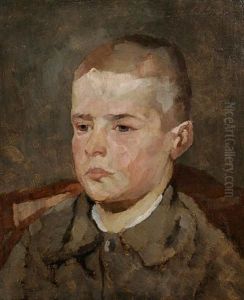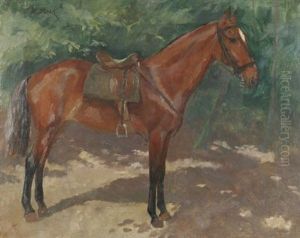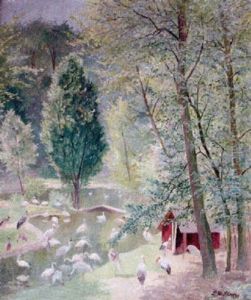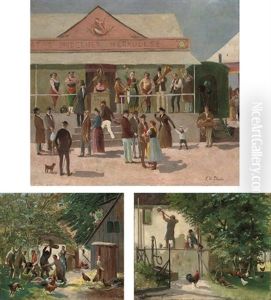Ludwig Wilhelm Plock Paintings
Ludwig Wilhelm Plock was a German painter and graphic artist known for his landscape and architectural paintings. Born on March 10, 1826, in Pyritz, Pomerania (now Pyrzyce, Poland), Plock showed an early affinity for the arts, prompting him to pursue a career in painting.
After initial training, Plock moved to Berlin to further his studies. He enrolled at the Prussian Academy of Arts, where he honed his skills under the guidance of prominent artists of the time. Plock's early works were primarily etchings and lithographs, through which he developed a keen eye for detail and composition.
Throughout his career, Plock remained an active participant in the German art scene. His works were often exhibited at various art shows, including those at the Academy of Arts in Berlin, where he received recognition and acclaim. Plock's paintings often depicted the serene beauty of the German countryside and the grandeur of its historic buildings, reflecting a romantic sensibility that was common among his contemporaries.
The latter half of the 19th century was a period of significant change in the arts, with movements like Realism and Impressionism gaining prominence. While Plock's style was rooted in the Romantic tradition, he showed an openness to these new artistic developments, which kept his work relevant and appreciated by both critics and the public.
Ludwig Wilhelm Plock's contributions to German art were recognized in his time, and his works continue to be studied and appreciated for their historical value and artistic merit. He passed away on January 2, 1907. Despite not being as widely known as some of his contemporaries, Plock's legacy endures through his paintings, which capture the essence of 19th-century Germany.


